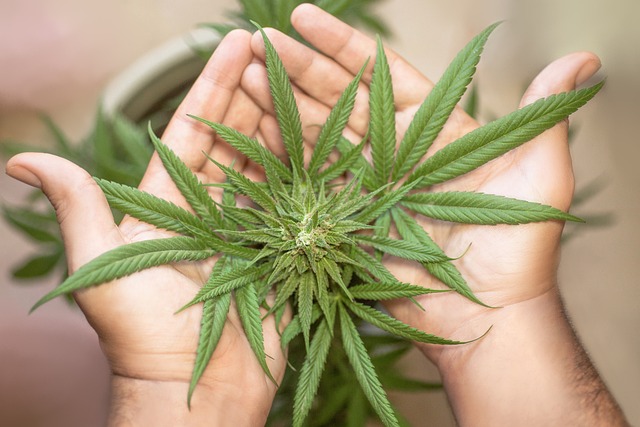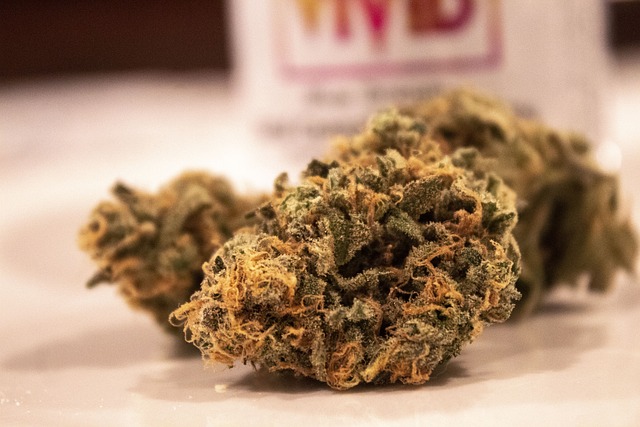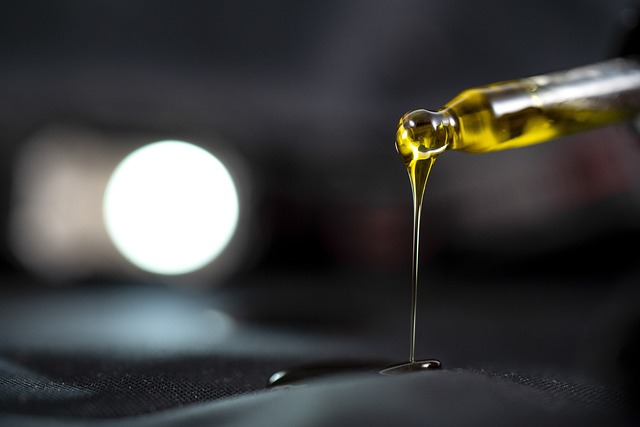The THCA flower, a non-psychoactive component of the Cannabis sativa plant, is garnering attention for its potential health benefits. As an acidic precursor to THC, THCA offers analgesic, anti-inflammatory, anti-nausea, and neuroprotective properties, which could be advantageous in managing various conditions without inducing psychoactive effects. Users report positive experiences with THCA flower for its stress, anxiety, and pain mitigation capabilities. Its interaction with the endocannabinoid system is thought to be responsible for these effects. Research is expanding on THCA flower's role in holistic health practices, highlighting its therapeutic potential without psychoactive influence. The non-psychoactive nature of THCA makes it a compelling option for those interested in cannabis therapy, particularly for conditions like chronic pain and anxiety, where relief is sought without cognitive impairment. As scientific investigation into THCA flower continues, its benefits and effects are becoming increasingly clear, with significant implications for the therapeutic applications of cannabinoids.
Explore the intricacies of THCA flower, a non-psychoactive cannabinoid that’s garnering attention for its potential health benefits. In this comprehensive guide, we delve into the transformative effects and advantages of THCA flower, highlighting its unique position in the cannabis landscape. From understanding its scientific distinctions to navigating its therapeutic properties, learn how to cultivate, consume, and harness the benefits of THCA flower responsibly for optimal well-being. Join us as we uncover the depth of this naturally occurring compound and its impact on health.
- Unlocking the Potential of THCA Flower: A Closer Look at Its Effects and Benefits
- The Science Behind THCA: What Sets This Compound Apart from Other Cannabinoids
- Navigating the Therapeutic Properties of THCA Flower: Pain Relief, Anxiety Reduction, and Beyond
- Cultivation and Consumption: How to Grow and Experience THCA Flower Effects Safely and Responsibly
Unlocking the Potential of THCA Flower: A Closer Look at Its Effects and Benefits

THCA, or Tetrahydrocannabinolic Acid, is the raw, non-psychoactive precursor to the well-known compound THC (Tetrahydrocannabinol), found in the Cannabis sativa plant. As interest in cannabinoids continues to grow, researchers and enthusiasts alike are turning their attention to the potential effects and benefits of THCA flower. Unlike its psychoactive counterpart, THC, THCA exists naturally in hemp and many cannabis strains and has shown promising properties. Its therapeutic potential is attributed to its affinity for the body’s endocannabinoid system, which regulates a range of functions and processes, including pain sensation, mood, appetite, and memory.
Consumers and patients interested in the effects and benefits of THCA flower often report an array of positive experiences. Preliminary studies suggest that THCA may possess anti-inflammatory, anti-nausea, anti-emetic (anti-vomiting), and neuroprotective qualities. Its non-psychoactive nature also makes it an appealing option for those seeking the therapeutic benefits of cannabinoids without the high associated with THC. Users commonly turn to THCA flower for its potential to alleviate symptoms related to stress, anxiety, and pain. Additionally, its neuroprotective properties are being researched for their potential in treating neurological disorders. As research continues to evolve, the understanding of THCA’s effects and benefits is likely to expand, offering new avenues for exploration and application in wellness routines and holistic health practices.
The Science Behind THCA: What Sets This Compound Apart from Other Cannabinoids

Delta-9-tetrahydrocannabinolic acid, commonly known as THCA, is a natural cannabinoid found in the raw cannabis plant and is the precursor to the more well-known psychoactive compound, delta-9-tetrahydrocannabinol (THC). Unlike its psychoactive counterpart, THCA is non-psychoactive, which allows consumers to experience its potential benefits without the ‘high’ associated with THC. The unique molecular structure of THCA, which includes an additional acidic carboxyl group (-COOH), differentiates it from other cannabinoids and influences its interactions with the body’s endocannabinoid system.
Research suggests that THCA flower effects and benefits may include anti-inflammatory, neuroprotective, and analgesic properties. These potential benefits are attributed to how THCA interacts with the CB1 and CB2 receptors within the endocannabinoid system. Unlike other cannabinoids, THCA does not directly bind to these receptors but may modulate their activity indirectly, leading to a range of effects that could be beneficial for various health conditions. Proponents claim that THCA flower can aid in managing symptoms related to inflammation and pain without the mind-altering effects of its decarboxylated form, THC. This makes it an attractive option for individuals seeking therapeutic benefits without impairment. As such, the study of THCA continues to evolve, offering a promising outlook on its role in cannabis therapy and the potential applications for which it may be best suited.
Navigating the Therapeutic Properties of THCA Flower: Pain Relief, Anxiety Reduction, and Beyond

The THCA flower, which is the raw, unheated form of cannabis that contains tetrahydrocannabinolic acid (THCA), possesses a range of therapeutic properties. THCA is non-psychoactive, meaning it does not induce the ‘high’ associated with its decarboxylated counterpart, THC. This allows users to experience the potential health benefits without the psychoactive effects. One of the most notable benefits of THCA flower is its analgesic effect, which can be highly beneficial for those suffering from chronic pain conditions. Studies suggest that THCA interacts with the body’s endocannabinoid system, influencing pain perception and providing relief. This interaction may also contribute to its anti-inflammatory properties, further enhancing its pain-relieving potential.
In addition to its analgesic qualities, the THCA flower has been explored for its anxiolytic effects. While research is still emerging in this area, preliminary findings indicate that THCA may help modulate mood and reduce anxiety symptoms. The therapeutic properties of THCA are believed to stem from its interaction with the body’s cannabinoid receptors, such as CB1 and CB2, which play a significant role in regulating mood and stress responses. Users who turn to THCA flower for anxiety relief often report feeling a sense of calm and well-being without the sedating effects commonly associated with some prescription anxiolytics. This makes THCA a compelling option for those seeking natural alternatives to manage their mental health. Beyond pain relief and anxiety reduction, the potential benefits of THCA flower continue to be studied, with ongoing research exploring its neuroprotective and antiemetic properties, among others.
Cultivation and Consumption: How to Grow and Experience THCA Flower Effects Safely and Responsibly

THCA, or Tetrahydrocannabinolic Acid, is a non-psychoactive cannabinoid found in raw cannabis plants, which, when heated, converts into the well-known psychoactive compound THC. The THCA flower, rich in this precursor, has garnered attention for its potential effects and benefits, prompting both seasoned growers and enthusiasts to explore its cultivation and consumption.
To cultivate THCA-rich flowers, one must first obtain a high-CBD strain with elevated THCA levels or a CBD-A dominant hemp strain. These plants should be grown in a controlled environment with careful attention to light cycles, temperature, and humidity to encourage the formation of THCA crystals. Soil quality is also paramount, as it affects the overall health and potency of the plant. Once mature, the flowers can be harvested and dried, preserving the THCA content. It’s crucial to handle these plants responsibly, adhering to local laws and regulations regarding cannabis cultivation.
For those interested in experiencing the effects of THCA flower, consumption methods vary. Raw flower can be consumed by juicing the plant or infusing it into edibles, allowing for a non-psychoactive experience that proponents claim may offer analgesic, anti-inflammatory, and anxiolytic properties. However, to truly experience the effects of THCA, it must be decarboxylated—a process that converts THCA into THC through heating. This can be done through various methods such as vaporizing or baking, which activates the cannabinoid and produces the psychoactive effects associated with cannabis. It’s important to approach this with care, starting with low doses to gauge individual sensitivity and effects. As with any substance, responsible use is key, and individuals should be well-informed about local laws and personal health considerations before engaging in the cultivation or consumption of THCA flower.
THCA flower, a non-psychoactive form of cannabis, holds significant promise for its potential health benefits and therapeutic applications. This article has delved into the science behind THCA, elucidating its distinct properties that set it apart from other cannabinoids. From the effects of THCA flower in offering pain relief to its role in anxiety reduction, the insights provided underscore the breadth of its potential benefits. Cultivators and consumers alike can take heart in the guidance offered on how to safely and responsibly cultivate and consume this promising compound. As research continues, the thca flower effects and benefits are poised to become ever more integral to holistic health practices.